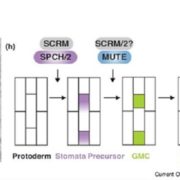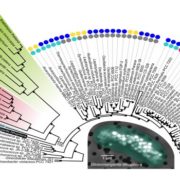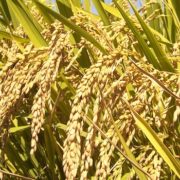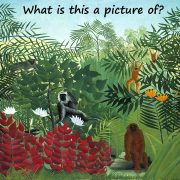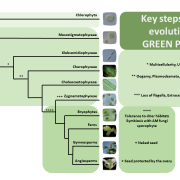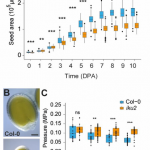Fossil palm reading using fruits to reveal the deep roots of palm diversity (Am. J. Bot.)
 One of the biggest challenges when using fossils in plant evolution studies is establishing the phylogenetic relationships between fossils and modern plants. This task is particularly complicated with fossils from flowers or fruits, given the little information available for most groups’ reproductive morphology and anatomy. In this outstanding paper, Matsunaga and Smith build a database of extant palm genera’s fruit morphology by retrieving information from the literature and analyzing fruits using microcomputed X-ray tomography. Tribes within each subfamily had a unique combination of fruit traits, suggesting that increasing our knowledge about palm fruit morphology allows assigning species within taxonomical categories with high confidence. For instance, previously identified fossils were consistently placed within the palm phylogeny in the expected clades using only fruit trait data. As a result, this paper highlights the importance of fruit morphology data and provides a promising starting point for future efforts to incorporate new fossils in evolutionary biology studies. (Summary by Carlos A. Ordóñez-Parra @caordonezparra) Am. J. Bot. 10.1002/ajb2.1616
One of the biggest challenges when using fossils in plant evolution studies is establishing the phylogenetic relationships between fossils and modern plants. This task is particularly complicated with fossils from flowers or fruits, given the little information available for most groups’ reproductive morphology and anatomy. In this outstanding paper, Matsunaga and Smith build a database of extant palm genera’s fruit morphology by retrieving information from the literature and analyzing fruits using microcomputed X-ray tomography. Tribes within each subfamily had a unique combination of fruit traits, suggesting that increasing our knowledge about palm fruit morphology allows assigning species within taxonomical categories with high confidence. For instance, previously identified fossils were consistently placed within the palm phylogeny in the expected clades using only fruit trait data. As a result, this paper highlights the importance of fruit morphology data and provides a promising starting point for future efforts to incorporate new fossils in evolutionary biology studies. (Summary by Carlos A. Ordóñez-Parra @caordonezparra) Am. J. Bot. 10.1002/ajb2.1616


